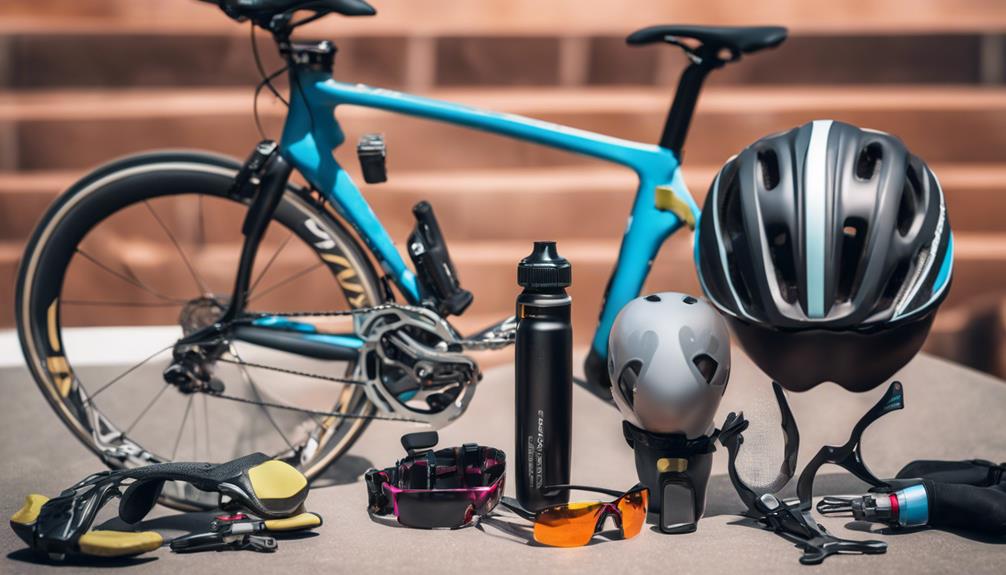Cycling is a popular activity worldwide, whether for commuting, recreation, or sport. However, with the increasing number of cyclists on the roads, safety has become a paramount concern. One of the most effective ways to protect oneself while cycling is by wearing a helmet. This article explores the significance of cycling helmets, backed by statistics, case studies, and practical advice on choosing the right helmet.
Why Wear a Cycling Helmet?
The importance of wearing a cycling helmet cannot be overstated. Helmets are designed to absorb impact and reduce the risk of severe head injuries in the event of a fall or collision. Here are several compelling reasons to wear a cycling helmet:
- Head Injury Prevention: According to the Centers for Disease Control and Prevention (CDC), wearing a helmet can reduce the risk of head injuries by 70%.
- Legal Requirements: Many regions have laws mandating helmet use for cyclists, especially children. Failing to comply can result in fines.
- Increased Visibility: Many helmets come with bright colors or reflective materials, enhancing a cyclist’s visibility on the road, especially during low-light conditions.
Statistics that Highlight the Need for Helmets
Statistics provide a clear picture of the importance of helmet use. According to the National Highway Traffic Safety Administration (NHTSA):
- In 2019, there were over 840 fatalities resulting from bicycle accidents in the United States.
- Of those fatalities, 27% of cyclists were reported to be wearing helmets at the time of the accident.
- In a study published in the journal BMC Public Health, it was found that cyclists who do not wear helmets are 14 times more likely to suffer a severe head injury than those who do.
These statistics underscore the critical role helmets play in safeguarding cyclists against potentially life-threatening injuries.
Case Studies: Real-Life Impacts of Helmet Use
Several case studies illustrate the effectiveness of wearing helmets in preventing serious injuries:
Case Study 1: The Commuter
A 35-year-old commuter named Sarah was involved in a collision with a car while riding to work. She was wearing a helmet at the time of the accident. Despite being thrown off her bike and landing head-first, Sarah sustained only minor injuries. Her helmet absorbed much of the impact, proving its life-saving capability.
Case Study 2: The Casual Cyclist
In another instance, a teenager named Jake was riding downhill when he lost control and fell. He was not wearing a helmet and suffered a severe concussion. Jake’s recovery took months and left him with lasting memory issues. If he had been wearing a helmet, the outcome might have been drastically different.
These cases highlight the stark contrast in outcomes based on helmet usage and serve as a reminder of the potential consequences of neglecting safety gear.
Choosing the Right Cycling Helmet
With various options available, selecting the right helmet can be overwhelming. Here are key factors to consider when choosing a cycling helmet:
- Fit: A helmet should fit snugly on the head without being uncomfortable. Look for a helmet that has an adjustable chin strap and internal padding.
- Certification: Ensure that the helmet meets safety standards set by organizations such as the Consumer Product Safety Commission (CPSC) or the Snell Memorial Foundation.
- Style: Helmets come in various styles, including road, mountain, and commuter helmets. Choose one that suits your cycling activities.
- Ventilation: Look for helmets with good ventilation to ensure comfort during long rides, especially in warm weather.
- Weight: Lighter helmets can enhance comfort, especially during long rides.
Helmet Maintenance and Care
Proper maintenance of your cycling helmet can ensure its longevity and effectiveness. Here are some tips to keep your helmet in top condition:
- Regular Inspection: Check your helmet for cracks or dents after any significant impact or fall.
- Cleaning: Clean your helmet using mild soap and water. Avoid using harsh chemicals that can damage the materials.
- Storage: Store your helmet in a cool, dry place away from direct sunlight, which can degrade the materials over time.
- Replacement: Replace your helmet every 3-5 years, or sooner if it has been involved in a crash or shows signs of wear.
Promoting Helmet Use: Community Initiatives
Many communities are working to promote helmet use among cyclists, especially children. Initiatives include:
- Helmet Giveaway Programs: Local governments and organizations often provide free or discounted helmets to encourage safety.
- Education Campaigns: Schools and community centers hold workshops to educate cyclists about the importance of helmet use.
- Group Rides: Organizing community rides where participants are required to wear helmets helps reinforce the habit.
Conclusion: The Essential Role of Cycling Helmets
Cycling is an enjoyable and healthy activity, but safety should always be a priority. Wearing a cycling helmet is one of the simplest yet most effective ways to protect yourself from head injuries. The statistics and real-life case studies presented in this article demonstrate the life-saving potential of helmets. Moreover, understanding how to choose, maintain, and promote helmet use can further enhance cyclist safety within communities.
In summary, whether you are a seasoned cyclist or just starting, make the commitment to wear a helmet every time you ride. Your safety—and perhaps your life—depends on it.
